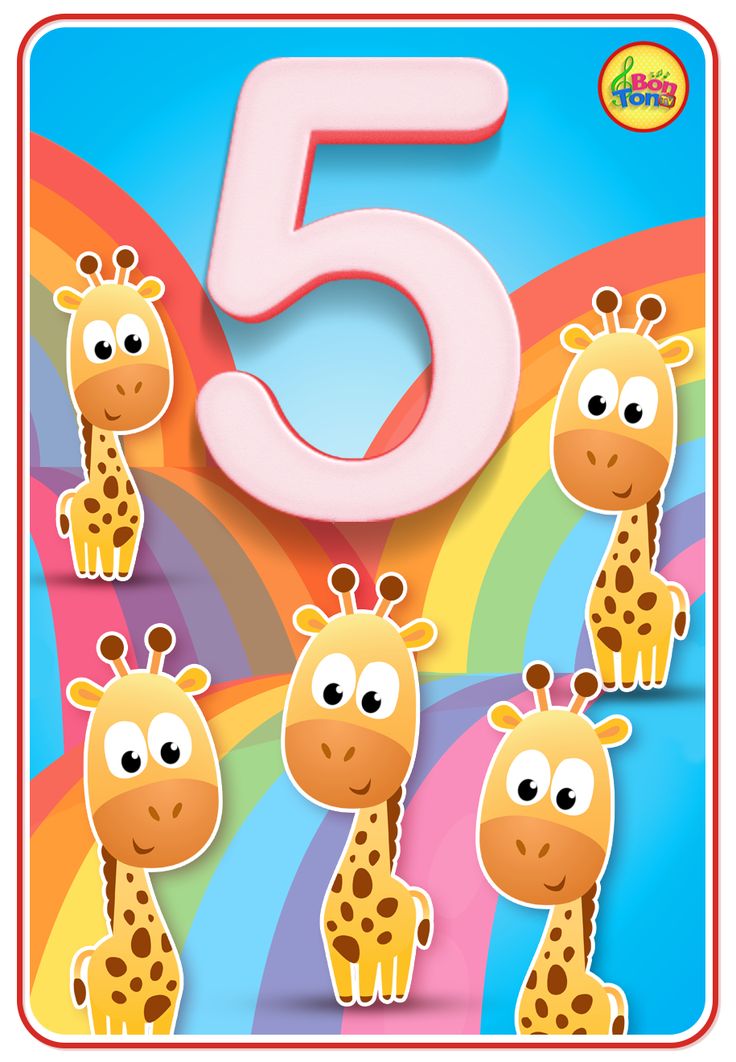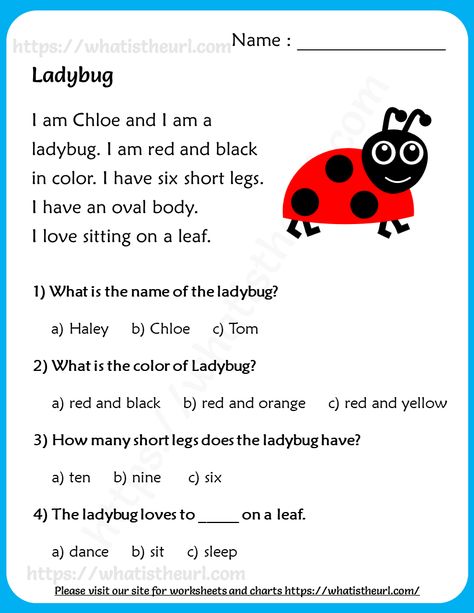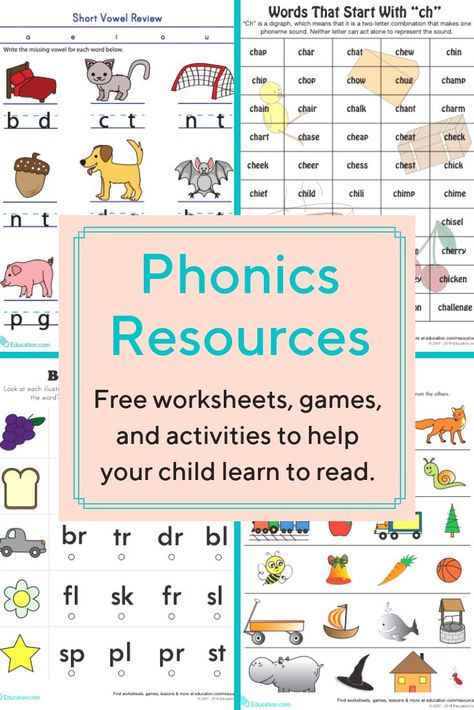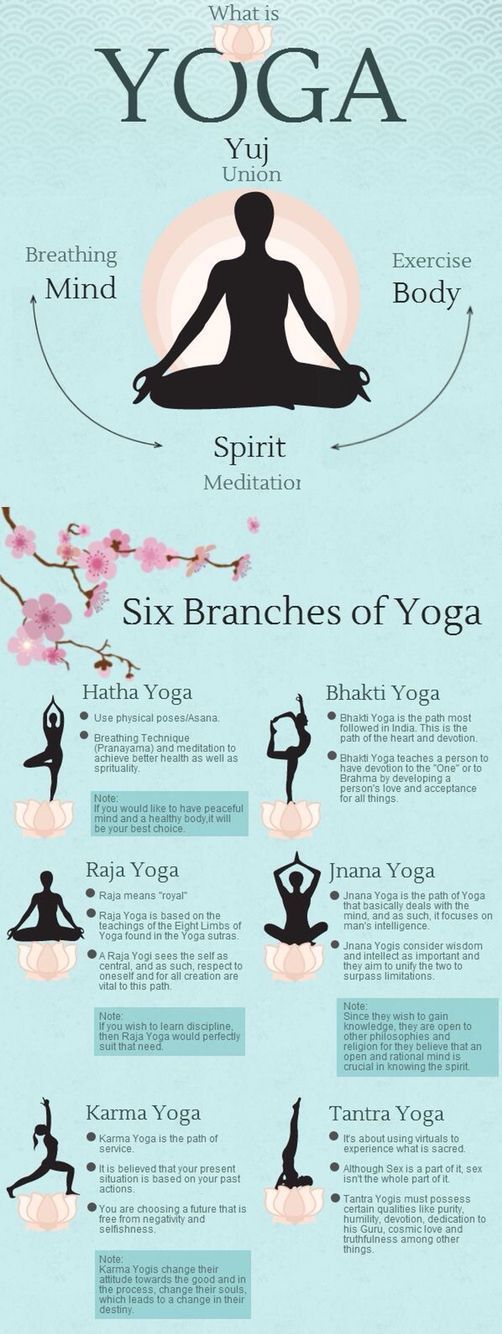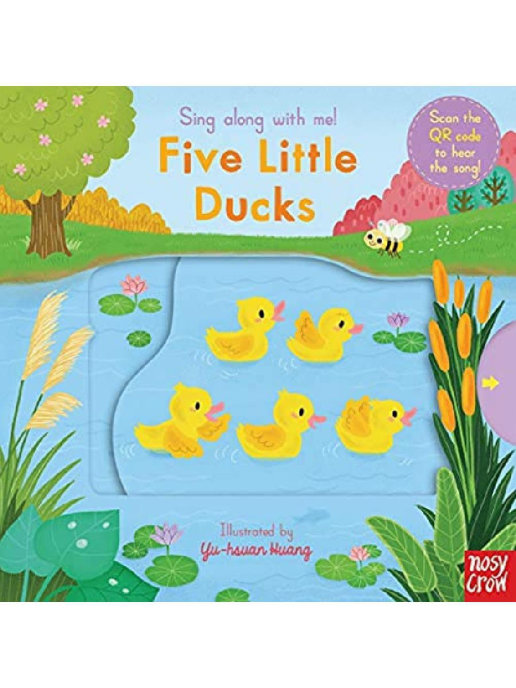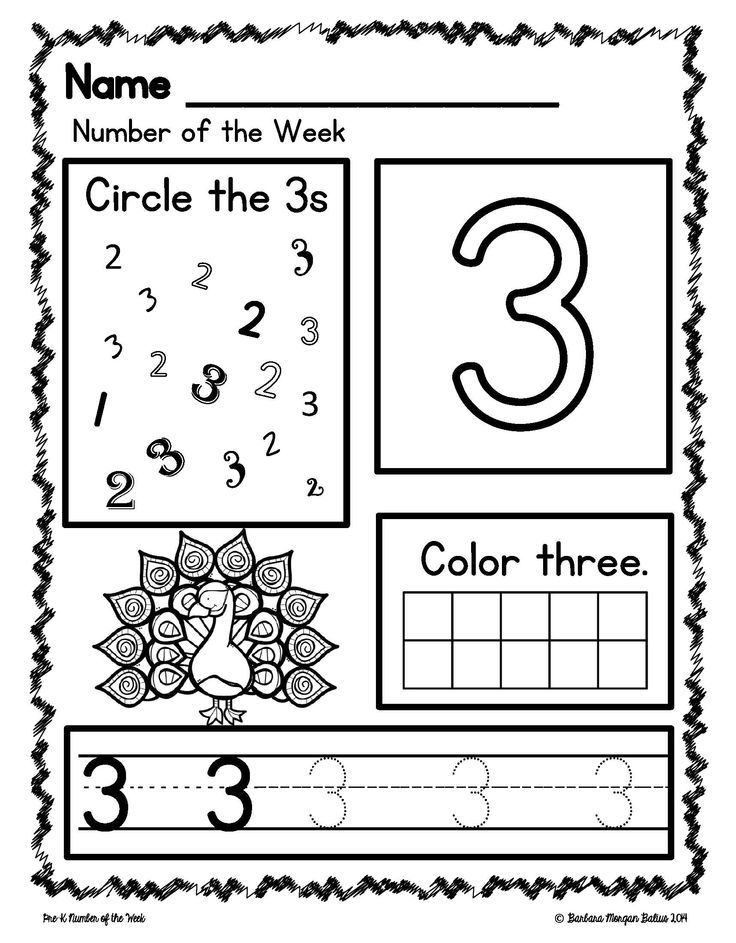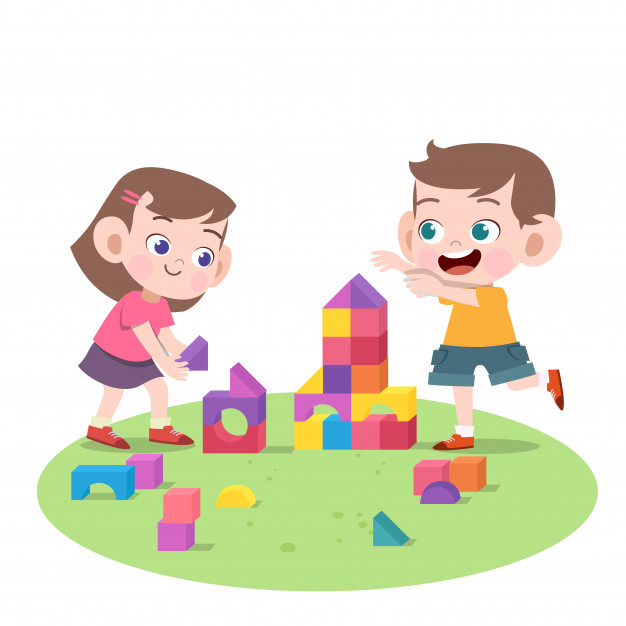Children learn numbers
When Do Kids Learn Numbers and Start Counting?
Starting counting is a significant milestone in children’s development. Though it seems like children learn when they start school, they start learning numbers just as soon as they start exploring the world around them. Other skills they have like identifying shapes help build on what they actually already know.
Counting is taken for granted often. However, there is a lot of research about where our capacity as humans to do math comes from. Some scientists suggest that we are all born with the innate sense of number in our brains.
Though we think that counting has to be taught, we are born with an instinct that the neuropsychologist Brian Butterworth explains as something similar to the idea of color. We perceive the ”blueness” of the sky just as we can perceive the ”threeness” of a group of objects.
When is the Perfect Time for the Children to Learn Counting Numbers?
Of course, having this instinct for the number of objects when we are born doesn’t mean that we don’t have to learn the names and the symbols of numbers to develop that instinct. Children start learning math as soon as they are out in the world and there are certain math milestones most children reach around approximately the same age. However, as we always mention, children develop at different rates. This means that if your child doesn’t have the skills listed for their age group, just be patient and on the lookout.
Similar to reading and talking, counting and math skills and thinking can be introduced to the child from the start. Studies show that children as young as 12 months can have a sense of how many items are in a set that is up to three objects thanks to their innate sense of number. When children start making the connections between the language we use to count and this innate sense, they learn counting.
Counting everyday objects around the house can be a great start for parents to count along with their children. Children may first learn the numbers in a different order, and may even repeat and memorize a sequence of numbers or counting.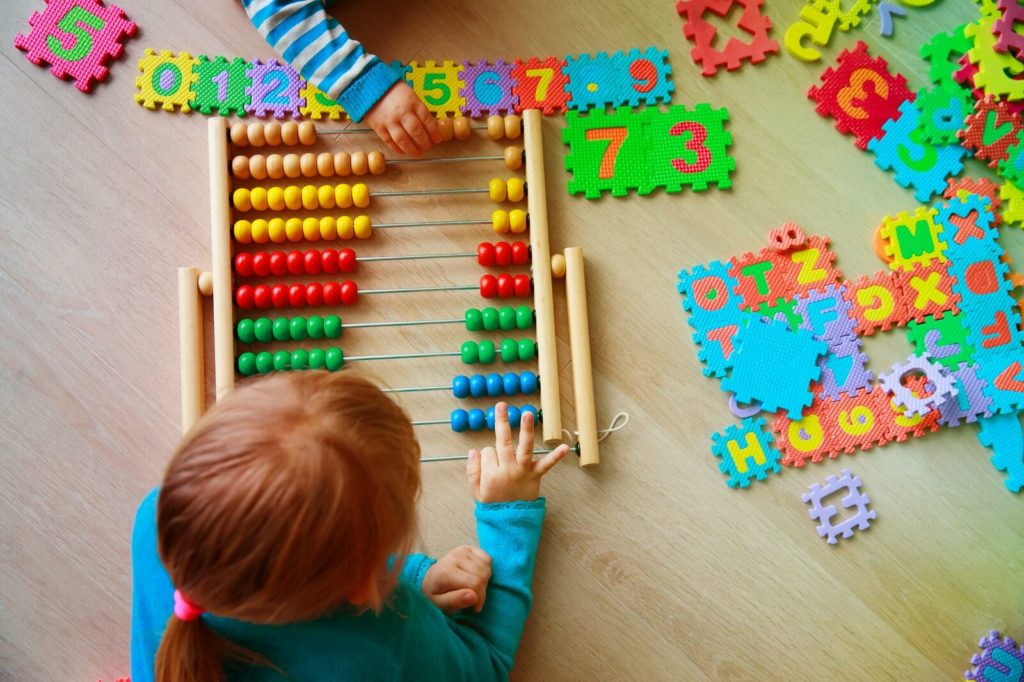 It is just like singing the ABCs. Songs could be great helpers in teaching children how to count. Children develop the ability to understand the actual concept of counting generally around the ages of two and four. By the age of four, children usually can count up to 10 and/or beyond.
It is just like singing the ABCs. Songs could be great helpers in teaching children how to count. Children develop the ability to understand the actual concept of counting generally around the ages of two and four. By the age of four, children usually can count up to 10 and/or beyond.
You may notice that your toddler is skipping some numbers along the way, like jumping from 3 to 6. This is called pre-counters where toddlers start saying numbers in no order. This is very typical for two-year-olds especially. Don’t worry, as they are just beginning to develop their skills. When you notice this happening, model the correct way of counting and they will hear you do the counting the correct way. Keep them exposed to counting and numbers as much as you can, just like what you are doing with reading.
Following the pre-counter stage comes the chanters level. Children may say numbers and count but do this in a sequence. Meaning that they group these numbers. You can observe this when if you interrupt them, they will have to start over rather than continuing from where they left off.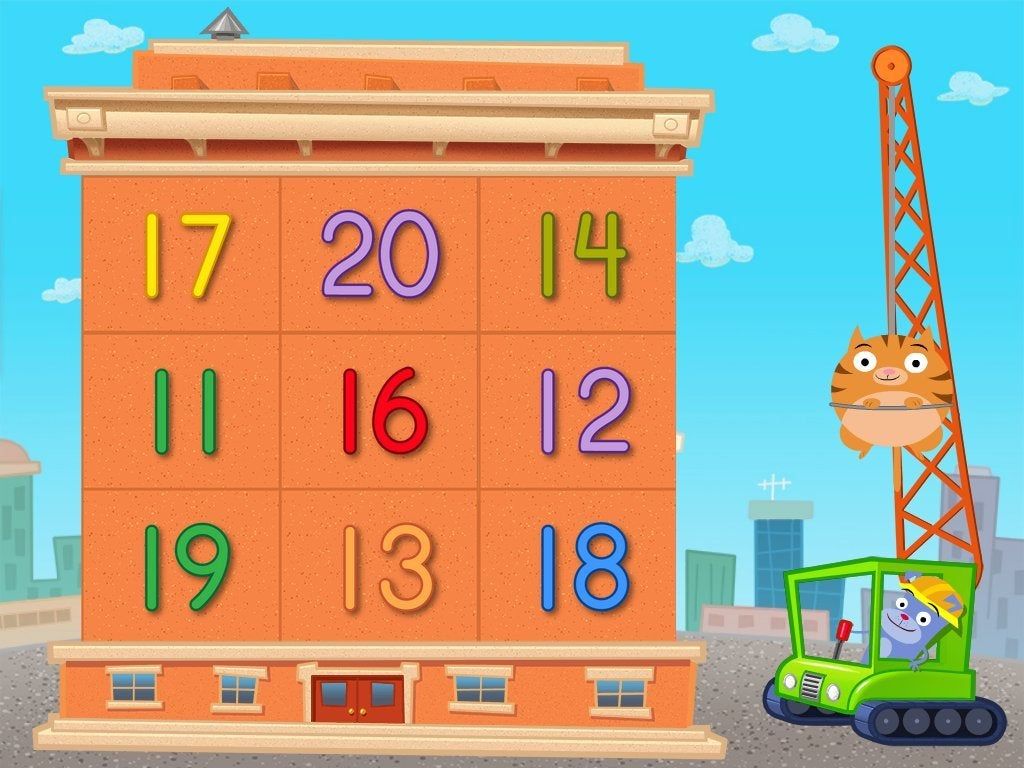 Then, reciter children can verbally count to 5 and so on. However, this is still pretty advanced for a child at this age so it should not be expected right away.
Then, reciter children can verbally count to 5 and so on. However, this is still pretty advanced for a child at this age so it should not be expected right away.
Children at the age of three to four can typically advance to a level of math that is a one-to-one correspondence. They can point at objects and count them. You can practice with your child this skill easily. For instance, to start off easy, put their toys in a straight line and have your child point to each toy as they count them. This behavior model can be used with infants and toddlers to develop their counting skills.
Come along with 200k+ families!
Explore the endless possibilities of learning!
Download for Free.
More than 100 games designed by
psychologists and specialists.
Otsimo Special Education
Download for Free
What is Rote Counting?
Rote counting is the simplest number concept that children can develop. It is the ability to say numbers in order from memory, so it basically consists of counting numbers sequentially.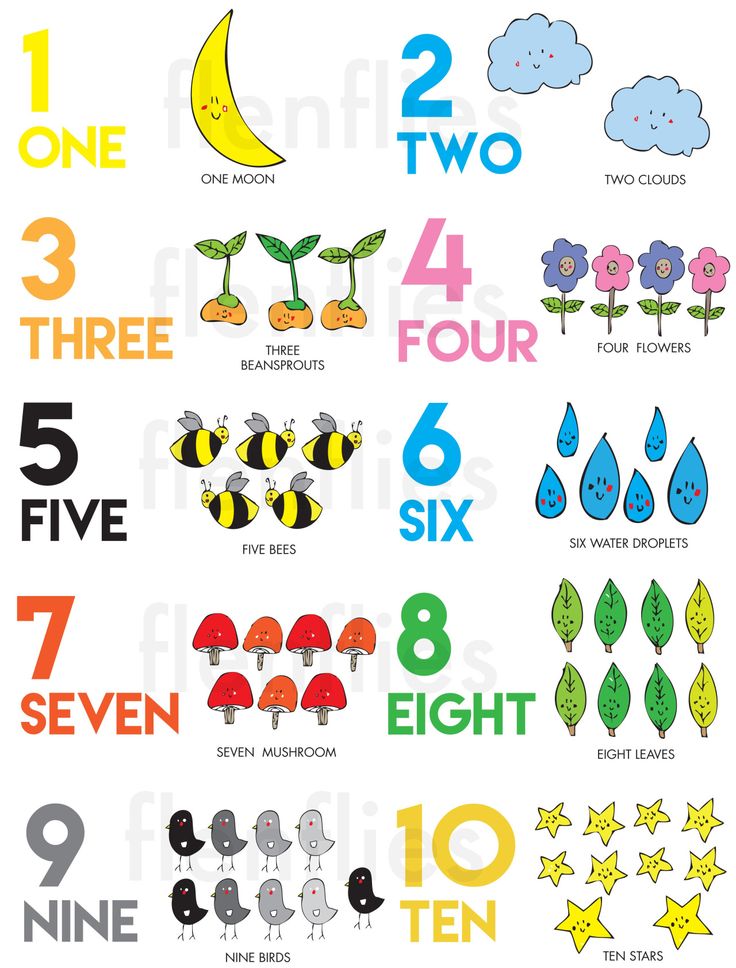 Most children find it easy to count by rote. Usually, this skill begins developing before children recognize numerals. When the child is exposed to counting and numbers both at home and at school, they start to develop together.
Most children find it easy to count by rote. Usually, this skill begins developing before children recognize numerals. When the child is exposed to counting and numbers both at home and at school, they start to develop together.
Through rote counting, children don’t actually count the objects, they just say the numbers in their correct sequence. It’s like going 1, 2, 3, 4, 5, etc. Here, the child doesn’t count objects or actions. Rote counting is just saying a sequence of numbers, and the simplest way is starting from one and counting upwards. It is a core skill related to early maths.
Once the child gets the hang of it, rote counting can also be done backward and starting from different points. When the child grasps this concept and gets this knowledge, they can apply it in different ways and contexts.
The importance of learning rote counting comes before the ability to count objects. Rote counting gets into the picture when a child sees five toys and wants to count them.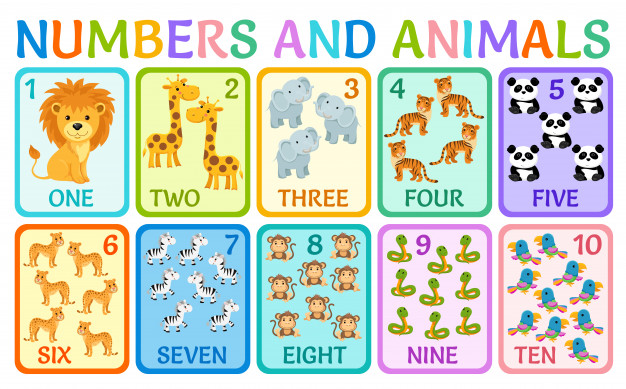 They would have to have the sequence of numbers in their head first in order to work out how many toys there actually are. If rote counting is not established at first, other skills like addition, subtraction, times tables or money may not be learned accurately. Repetition is the best possible way to rote learning.
They would have to have the sequence of numbers in their head first in order to work out how many toys there actually are. If rote counting is not established at first, other skills like addition, subtraction, times tables or money may not be learned accurately. Repetition is the best possible way to rote learning.
Rote counting can be developed and practiced easily with your kid. Try to incorporate counting in your daily routine with your child. You can count the items you got from the grocery store, or create or use counting songs as they will be catchy enough to help your child learn rote counting more quickly. One of the good counting song examples is 1,2,3,4,5 – Once I Caught a Fish Alive.
Math Skills in Different Ages
Each child develops at a different rate than others. However, there is an age group where certain skills develop to take as reference. Here are math skills that children acquire at different ages:
Age 0 - 12 months - Babies
- Starts to understand basic cause and effect relations
- Starts to understand sizes and relative sizes, like small and big
- Starts to understand words related to quantities
- Starts to predict the sequence of events, like opening the door means mommy is coming
Age 1 - 2 years - Toddlers
- Can use fingers to show how many years old they are as they understand that numbers mean ”how many”
- Can match certain basic shapes, like putting the triangle in the triangle hole
- Can understand words indicating comparison or measure like behind or faster
- Can start to recite numbers but may skip some
Age 3 - 4 years - Preschoolers
- Can compare and contrast height or size
- Can recognize shapes around
- Can sort things out based on color
- Can make the connection between numerals and number names, like 2 and two
- Can count up to 20
Age 5 years - Kindergartners
- Can add by counting their fingers on one hand
- Can follow very basic maps
- Can draw symmetrical shapes
- Can understand and follow directions that have multiple steps
Age 6 - 7 years - First and second graders
- Can understand and know the difference between 2D and 3D shapes
- Can count to 100 by ones, twos, fives, and tens
- Can write and understand numerals from 0 to 100
- Can write and recognize the words for numbers from one to twenty
- Can do basic addition and subtraction up to 20
Age 8 - 9 years - Third graders
- Can know how to do multiplication and division
- Can do addition and subtraction
- Can handle money
- Can use paper and pencil to solve math problems
Basic and Fun Math Games for Counting to 10
We have gathered some basic and fun math games that will develop your child’s sense of numbers, counting, and math!
Count with Dominoes!
In this game, you can use dominoes to practice counting and maths.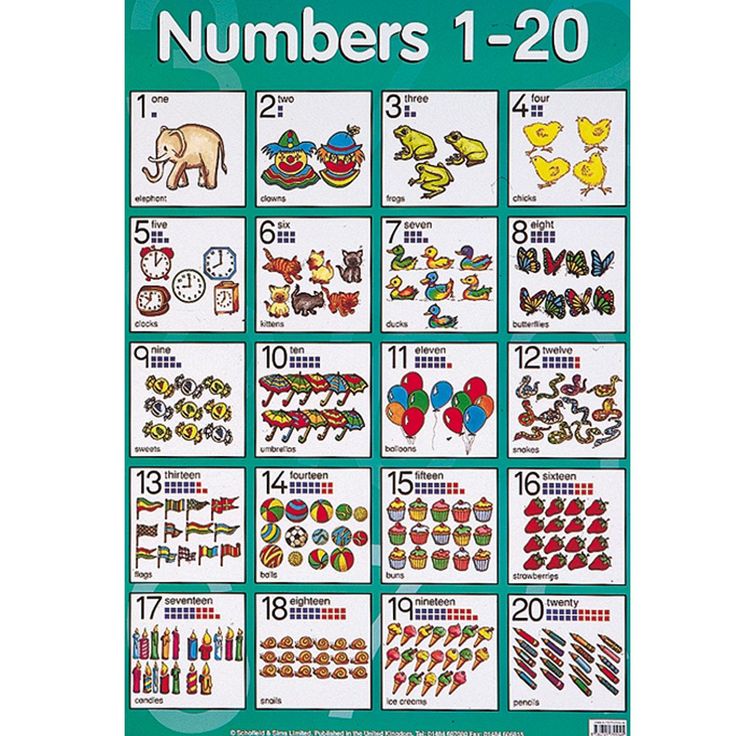 You can draw your child a worksheet where you will separate the page into boxes. You can then give your child a domino for them to count the dots on the two sides.
You can draw your child a worksheet where you will separate the page into boxes. You can then give your child a domino for them to count the dots on the two sides.
If you would like to put math into the game, you can put one addition or subtraction, where the child will write or tell the numbers and the result. You can also play this game with more than one child to turn it into a competition!
Toy Car Race!
You can play this game with some toy cars, cardboard tiles, and dice. You can race your child or you can have your child and other children play at the same time. The goal of the game is to move 10 tiles to get your toy car to finish the race. The number of tiles can be increased depending on which numbers you would like to work on.
Your child will roll a die and lay down a tile to move their car forward. However, in order to get to tile 10 at the end, they have to roll the number they need. Going over is not allowed. This will help your child practice counting as well as some basic addition.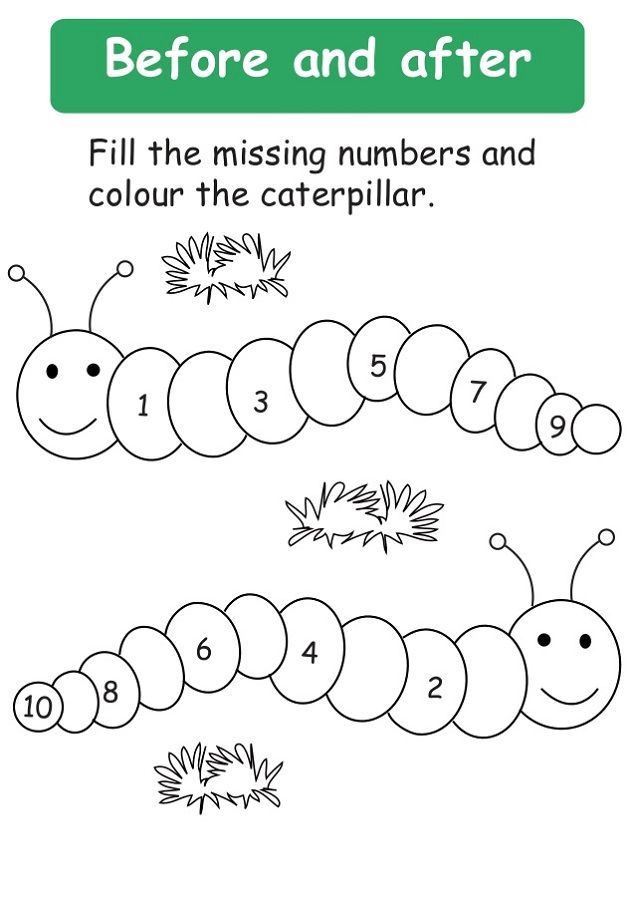
Makeshift Weight Station
You won’t need much for this game. Get a clothing hanger and hang two plastic cups on either side of the hanger. Have your child drop small items into the cups to see which items weigh more or less. Kids love this game and putting items in the cups. Have your child or multiple children guess what weighs more first! You can also ask them to guess how many of the objects in the cup weigh the same.
10 Rocks
This is a great outdoor activity to learn counting and math. Prepare buckets with numbers on them. Have your child look for and gather rocks and put them into the buckets to complete the number on the bucket. You can also add some other features into the mix, for instance, have your child look for 5 big rocks for the big rock bucket and 10 small rocks for the small one.
Help Children Understand the Meaning of Counting — Better Kid Care — Penn State Extension
Topics include: learning about measurement, learning about patterns and sorting, and learning about shapes and space.
Teaching children to count involves more than helping them learn the numbers one to ten. It involves helping children understand the meaning of numbers.
Children learn the meaning of numbers when they are developmentally ready. For instance, children ages two to three might move things as they count, but they might count to three while moving four things. This shows that while they might know the numbers in sequence, they are not able to use them to count. At this age, it’s great to count together with a child, just for fun. You might count the steps as you walk up them or the buses as they go by. This helps children begin to move towards matching one thing at a time with the number as they say it.
Three- to four-year-olds are still learning to understand quantity. While they can count up to five, they are growing in their understanding of what numbers really mean. By age four to six, children can match the numbers one to ten with ten items; this means they are really counting with meaning.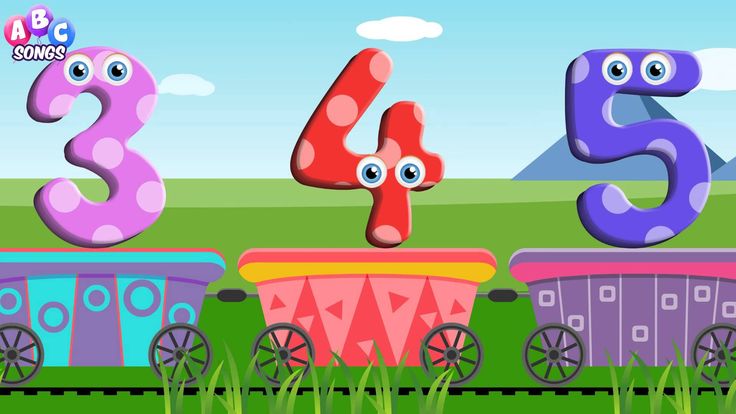 They can solve simple problems, such as how many cookies you will need for each person to have one. By the time children reach the ages of five to seven, they can count items and match them; for example, putting five stamps on five letters.
They can solve simple problems, such as how many cookies you will need for each person to have one. By the time children reach the ages of five to seven, they can count items and match them; for example, putting five stamps on five letters.
You can help your child learn to count by making counting a fun part of your day. Count socks as you sort them; count the juice boxes in your refrigerator; count the cars and buses going by. The more experience children have with counting, the more they will learn the meaning of numbers. Understanding the meaning of numbers takes experience with counting lots of things, and you can help by giving your child this experience regularly.
Learning about Measurement
Giving your young child a chance to measure things can help her understand both how and why people measure things. Find real measuring jobs for children to work on. Will this table fit here in this space? How tall are you? How much bigger is the plant than it was a month ago?
Inches, feet, and other units of measurement don’t make much sense to a young child.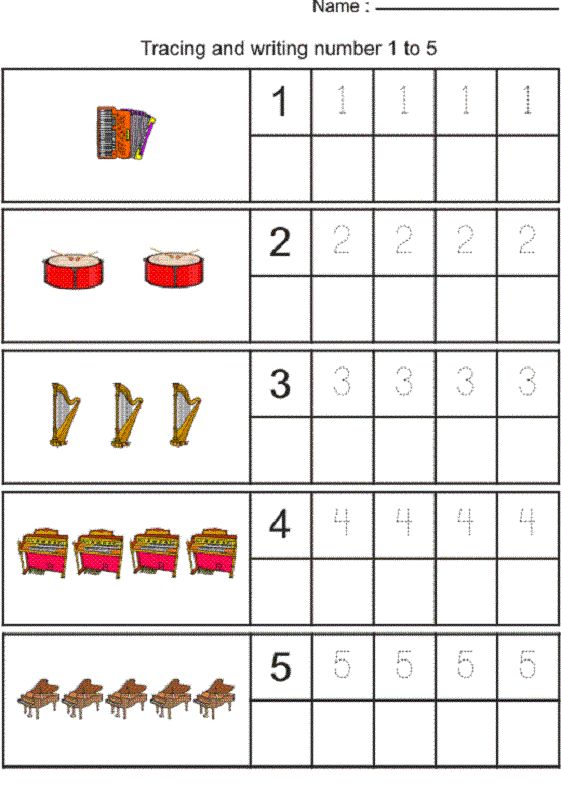 Teach your child to measure with a simple object, such as a shoe. Check how long the rug is with the shoe, or measure the height of a plant with blocks. Then give her a ruler to work on measurement problems. How big a block do we need to fit this space?
Teach your child to measure with a simple object, such as a shoe. Check how long the rug is with the shoe, or measure the height of a plant with blocks. Then give her a ruler to work on measurement problems. How big a block do we need to fit this space?
Learning about Patterns and Sorting
You can help your child get ready for math by giving him chances to think about patterns and to sort things. This skill is both fun and important in learning math. You can use things that you can find outside: pinecones, leaves, sticks, etc. Lay out a pattern with these objects (leaf, leaf, stick, stick, stone) and then repeat the pattern and ask your child to make the same pattern. Most children enjoy this simple game.
You can help your child develop sorting skills when you do your household chores. Ask your child to put the blue towels in one pile and the white in another. As children grow you can challenge them to use two different ways to sort. You might say, “Can you sort these towels by color and then put all the large towels in this basket and all the small ones here on the shelf?”
Learning about Shapes and Space
Take time to notice shapes and talk about them with your kids.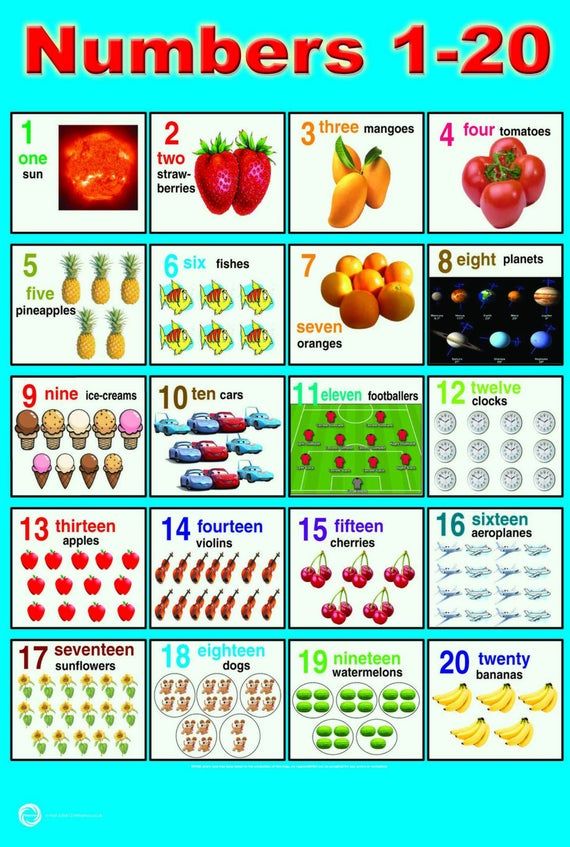 Shapes are everywhere. A simple walk is a great time to talk about them — you might see the rectangles made by the fence posts, or the circular manhole covers. As you pick out shapes, your children will learn how to do this as well.
Shapes are everywhere. A simple walk is a great time to talk about them — you might see the rectangles made by the fence posts, or the circular manhole covers. As you pick out shapes, your children will learn how to do this as well.
Children learn best about sizes, shapes, and how things fit together by playing. Blocks are a great toy to teach these spatial relationships. Building structures helps children figure out how things can fit together. They learn about what it means to double things in a practical way, when they discover that they need two blocks to fill a space. When children understand the real-life meaning of these things, the idea of multiplying by 2 makes sense.
Parent Count December 2007
How to teach a child to count
1561
Learning numbers with a child and teaching him to count is not an easy task. But any parent knows that you need to get acquainted with mathematics at a preschool age. If a kid at 5-6 years old masters the composition of the number and counting within ten, then it is more likely that at school it will be easier for him to cope with tasks.
If a kid at 5-6 years old masters the composition of the number and counting within ten, then it is more likely that at school it will be easier for him to cope with tasks.
How to interest a child in mathematics?
First, follow the basic rules:
- 1. It is better to learn numbers and numbers not at the table, but in the game or immediately in practice. For example, have the child count the ingredients for a cake or a button on a shirt.
- 2. Practice when the baby is in a good mood. Try to evoke positive emotions in him. So the information is better remembered.
- 3. First, choose easy examples so that the child can cope with them. And when he successfully masters the first task, he will definitely want to repeat the success. At the same time, do not forget to praise the child.
- 4. Practice constantly, each time using something new. This is how you maintain interest and form a habit.
- 5. If the child fails to solve the task - do not get annoyed, but try to explain in practice.
 After all, the main thing in 5 years is not to learn the basics of mathematics, but to form an interest in studying it in the future.
After all, the main thing in 5 years is not to learn the basics of mathematics, but to form an interest in studying it in the future.
How to learn numbers:
Draw and hang in the child's room a number series from 1 to 20. It will always be in front of your eyes and will be remembered. Play the game of "jumping finger": point your finger in a chaotic order of the numbers from this row and ask for a number. Draw separate cards with numbers from 1 to 20 and ask the child to name them. In the first case, the baby remembers the ordinal arrangement of numbers, and in the second, he learns to recognize them randomly.
Make these cards: draw a number on dark cardboard with PVA glue, dip in semolina and dry. We work with these cards like this: the child circles the number with his finger as it should be written according to the rules, and pronounces the association aloud. For example, the number 1: first draw a tail with your finger from the bottom up, and then a straight stick down, saying: "Beak, leg. " For numbers 2 - "Head, neck, tail"; 4 - "Back, seat, leg", etc. Come up with your own associations to better remember. In this exercise, children visually see the number, feel it tactilely, remember the spelling, speak out loud and reinforce it with associations.
" For numbers 2 - "Head, neck, tail"; 4 - "Back, seat, leg", etc. Come up with your own associations to better remember. In this exercise, children visually see the number, feel it tactilely, remember the spelling, speak out loud and reinforce it with associations.
You can get acquainted with the numbers and complete tasks online to consolidate knowledge on our website in the "Counting and Numbers" section.
How to teach counting:
In order for a child to learn to count, he must master the composition of the number, that is, understand that the number 5, for example, consists of a combination of the numbers 2 and 3, 1 and 4, etc. And for this, we first show the numerical value of the number 5 on real identical objects. For example, 5 is 5 spoons, apples, etc.
Play the game "Let's share" as often as possible. Take 5 sweets and offer to share between two. Ask the child: "How will we divide the sweets? How much will you take for yourself, and how much will you give to me?" Show that 5 sweets can be divided like this: 1 for mom, and 4 for baby, 2-3, 3-2, 4-1. And be sure to show that you are not counting empty numbers, but numbers that represent real candies.
And be sure to show that you are not counting empty numbers, but numbers that represent real candies.
You can also play this game: take 5 buttons (or other small items), first show the child that there are 5 of them, count with your finger. Then hide your palms with buttons behind your back and ask the child: “If I have 2 buttons in my right hand, how many in my left?” And then invite the kid to ask you a riddle. Guessing, sometimes "make mistakes" - children love to "catch" adults on mistakes.
Having mastered the composition of the number, the child will easily understand the basics of addition and subtraction.
Tasks for ordinal counting and comparison for preschoolers are recommended to be completed on the page "Assignments in mathematics for children 5-6 years old."
Did you like it? Share with friends:
Online classes on the Razumeikin website:
-
develop attention, memory, thinking, speech - namely, this is the basis for successful schooling;
-
help to learn letters and numbers, learn to read, count, solve examples and problems, get acquainted with the basics of the world around;
-
provide quality preparation of the child for school;
-
allow primary school students to master and consolidate the most important and complex topics of the school curriculum;
-
broaden the horizons of children and in an accessible form introduce them to the basics of various sciences (biology, geography, physics, chemistry).
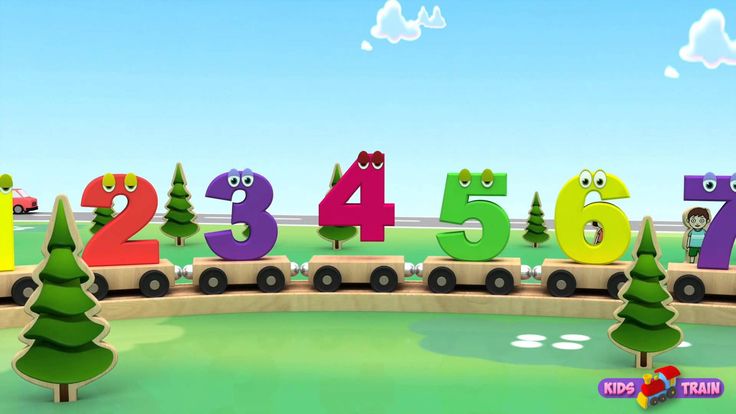
How to teach a child to numbers at 3
Article
- Best age
- Rules for the organization of lessons
- Stages of the training process
- Classes with didactic materials
- variety of exercises
- Use of various forms of work
Active development of the child should occur from an early age, therefore, at the age of 3, it is worth starting to learn numbers, using various games, manuals, and didactic materials for this purpose. Depending on the abilities of a particular baby, you can master counting up to 10 or even up to 100, the main thing is that everything is clear to the baby and he enjoys the lessons.
The best age
There is a famous phrase “after three it's too late”. Indeed, scientists have proven that babies at 2.5-3 years old have a unique ability to memorize, which weakens with age. Therefore, three-year-olds are quite capable of making their first trip into the world of mathematics and learning numbers, this will help their development and will be an excellent method of preparing for school.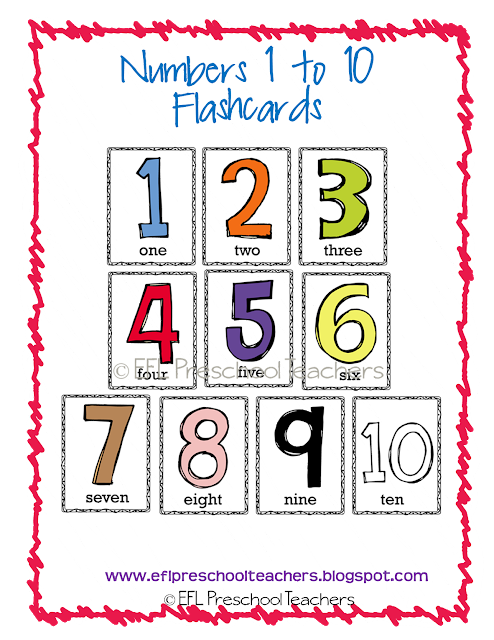 In addition, working with didactic materials, such as Kuizener sticks, improves fine motor skills, which, in turn, has a beneficial effect on speech.
In addition, working with didactic materials, such as Kuizener sticks, improves fine motor skills, which, in turn, has a beneficial effect on speech.
That's why the first lessons in arithmetic can be taught as early as 3 years old. However, if the baby is not yet ready for this, it is worth giving him time, postponing the start of lessons until 4-5 years old.
Rules for the organization of the lesson
To ensure that acquaintance with numbers does not turn into a "catharsis" for the child, the following principles of work should be used.
- Learning by playing. Regular guests in the classroom should be toys, dolls, fictional fairy-tale characters.
- Praise is the best motivation, but scolding a baby is not worth it. It is important for parents to remember that the child does not understand why adults are unhappy with him, because he really tried. This attitude can permanently kill his desire for learning. Therefore, strictness should be forgotten.
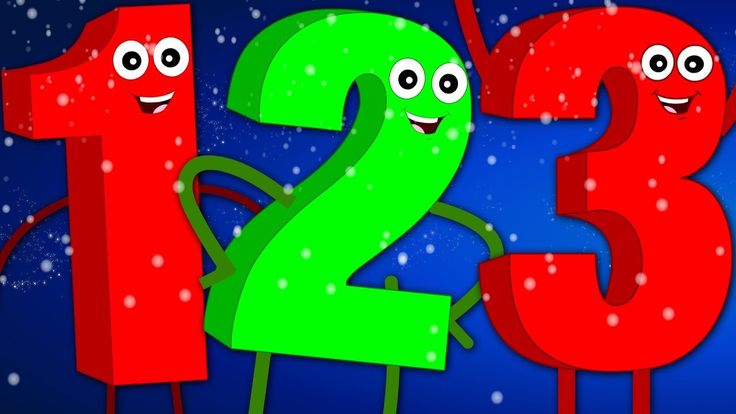
- Classes should be conducted continuously, so you can put large bright cards with numbers, number series on the wall in the baby's room. The main thing is that the pictures should contain not only the number itself, but also the amount indicated by it. For example, a deuce and two oranges.
- Combine different activities. So, modeling figure-figures from dough or plasticine not only helps their assimilation, but also contributes to the development of fine motor skills.
- You should not overload the baby with new knowledge, for one day of acquaintance with one new number is enough. When he has learned to clearly imagine that 1 is one subject, and 7 is seven, you can start learning to count.
Compliance with these simple rules will help parents not only pass on useful knowledge to the baby, but also enjoy the lesson itself and communication.
Stages of the learning process
It is not easy to teach a child numbers, this matter should be approached carefully and seriously - so arrange the work in such a way as to follow the logic “from simple to complex”.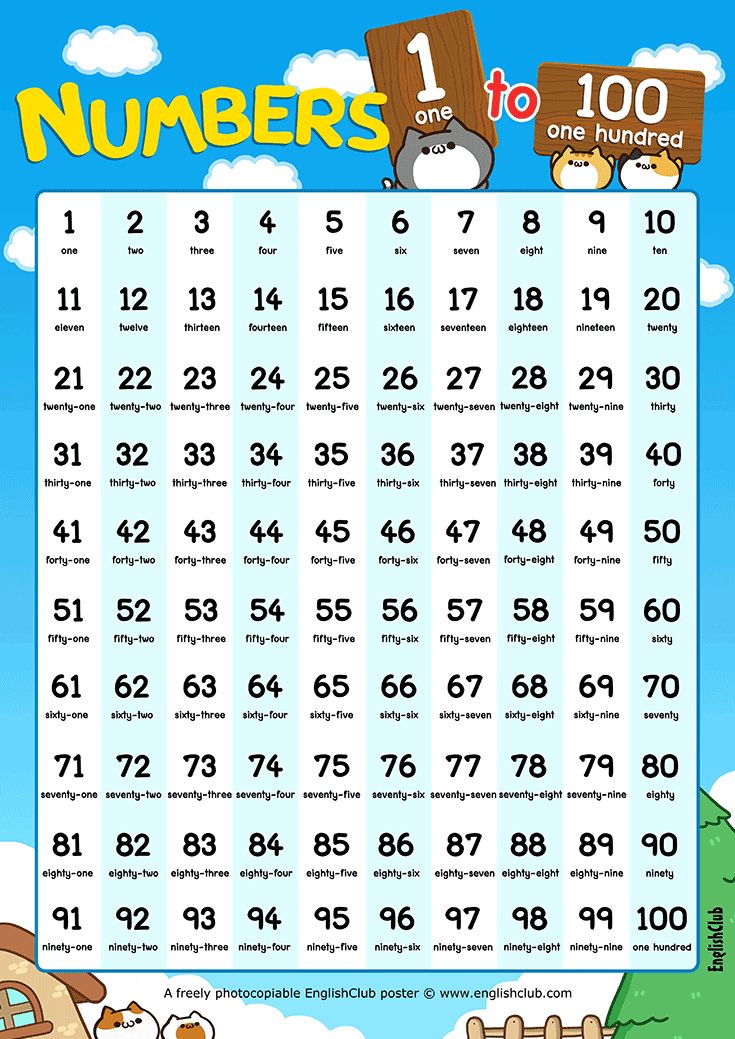
There are several stages of work.
- Acquaintance. The parent prepares the material in advance: a card, which shows, for example, one or two, selects the required number of identical items. After that, he explains that “today we are getting acquainted with the number “One”, it denotes one object. Here, look, there's only one bear." How many bears do you see?
- Memorization. Offer the child various tasks that will help him remember what the unit looks like and what it means. Let's help him a little. Tasks should be of two types: first, those that help to correlate the number with a specific amount, and then those aimed at remembering the appearance of the number.
- Fastening. The next "portion" of tasks that the baby must already complete completely independently.
- New material.
It is necessary to emphasize the connection with the past, show one bear and ask how many bears the child sees, then put the second one, say that there are now two bears.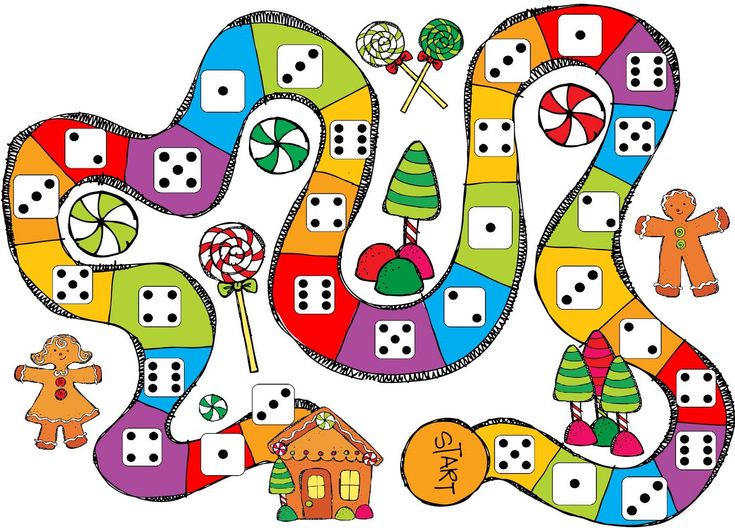 You should not overload the child, acquaintance with each subsequent figure should be carried out only when the previous one is well learned. If parents do not have the opportunity to buy the same toys, cards, sweets, fruits, vegetables will come to the rescue. When deciding where to start, the exercises must be selected in such a way that each of them is accessible to the baby.
You should not overload the child, acquaintance with each subsequent figure should be carried out only when the previous one is well learned. If parents do not have the opportunity to buy the same toys, cards, sweets, fruits, vegetables will come to the rescue. When deciding where to start, the exercises must be selected in such a way that each of them is accessible to the baby.
Activities with didactic materials
Thanks to their variety, games with specially designed sets, such as Cuisener's sticks, are suitable for children from 3 to 5 years old. You can choose those options that best correspond to the level of development of the crumbs.
For toddlers, tasks according to the following templates are suitable.
- Find three yellow sticks.
- How many sticks do I show?
- Find two blue sticks and four yellow sticks. What more?
- The parent lays out a square of sticks and then asks how many sticks did I use to create the figure? The opposite task is also possible: fold the figure using only 5 (or any other number) sticks.
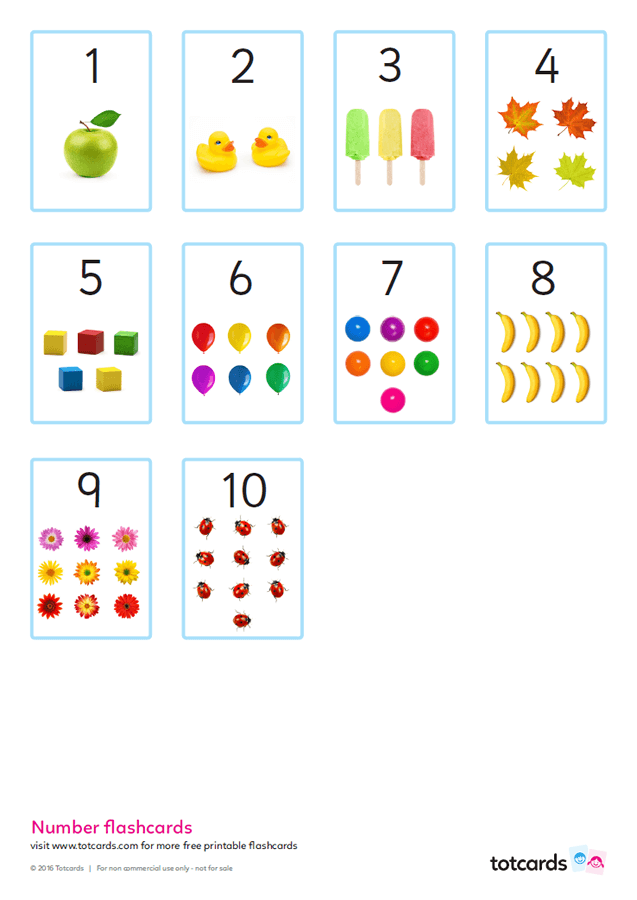
Doman's card technique has proven itself well, which helps to remember the appearance of a number and its meaning. The tasks are also simple.
- Mom shows a card, the child's task is to understand what number is shown on it, and find its pair - another card on which the required number of objects is drawn.
- Then vice versa - the mother chooses a card, for example, with two bears, the child must find a pair for her - "2".
- Mom shows a card with three hares and asks the child to find the number of objects in the apartment that is shown in the picture. The preschooler can bring her three apples.
Expert's opinion
Tanya Okhrimenko, educational psychologist: It's great to learn numbers with a child in a game. And you can do it not only at home. For example, going up the stairs and counting the steps. The main thing is that if the child does not remember them, do not worry, let a little time pass and everything will be fine with him.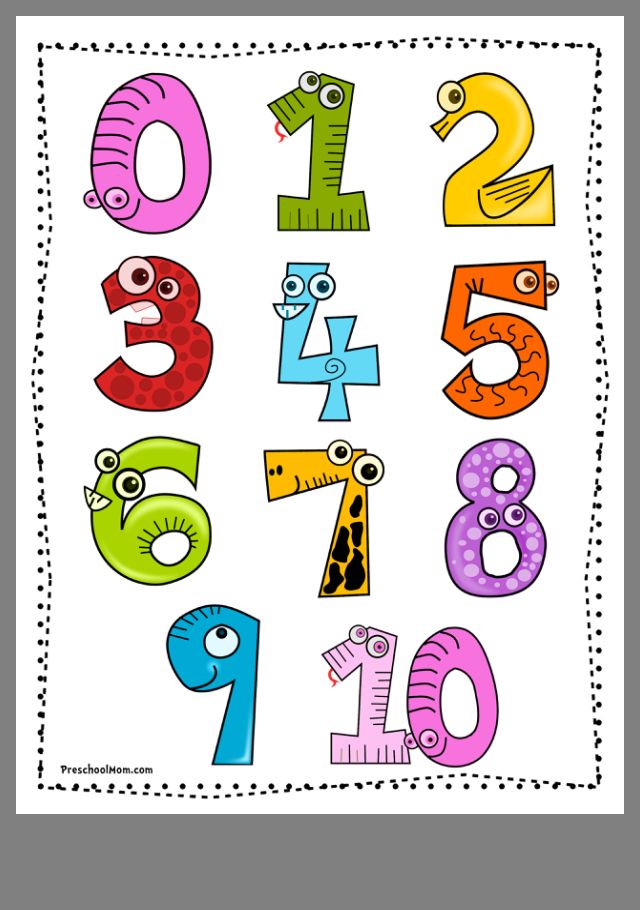 For example, what a child remembers for weeks at 3 years old, at 5 he will be able to remember in a matter of minutes if he wakes up with “cognitive interest”.
For example, what a child remembers for weeks at 3 years old, at 5 he will be able to remember in a matter of minutes if he wakes up with “cognitive interest”.
You can buy these cards or make your own.
For preschoolers who are well versed with the first ten, you can also use Zaitsev's number tape, which is a series of numbers from 1 to 99. You can place it on the wall so that the manual is always in front of your eyes. Tasks may vary.
- An adult describes a number: two tens, three ones. The task of the child is to understand that we are talking about 23, and show the number on the tape.
- Whose number is greater. Mother and child each take one card with numbers written on it. The child must understand whose number is more important, and then find both on the tape.
- Find the age of each family member on Zaitsev's tape.
All this will help preschoolers form the correct idea of numbers.
A variety of exercises
There are a large number of exercises that will help a 3-year-old child to get acquainted with numbers, remember how they look and what the number means. Some of them can be used at the age of 4 years. You need to start with what the child knows well.
Some of them can be used at the age of 4 years. You need to start with what the child knows well.
- Sample. The mother puts a dish in front of the child on which fruit or sweets lie, and asks him to score, for example, three pieces (for example, “give mother three sweets”). The second version of the task - the mother herself puts aside a certain amount of sweets and asks the child to count them, and then say how many sweets are in the pile.
- Find the number. An adult asks a preschooler to show him all the units that are presented on a pre-prepared poster. This will help the baby remember what the number looks like.
- Find a couple. The parent prepares two series of pictures: one shows large numbers, the other shows illustrations for fairy tales familiar to children. For example, two Ivans, three bears, seven Simeons, and so on. The child's task is to match the picture and the number.
- Count your fingers (after getting to know the five).
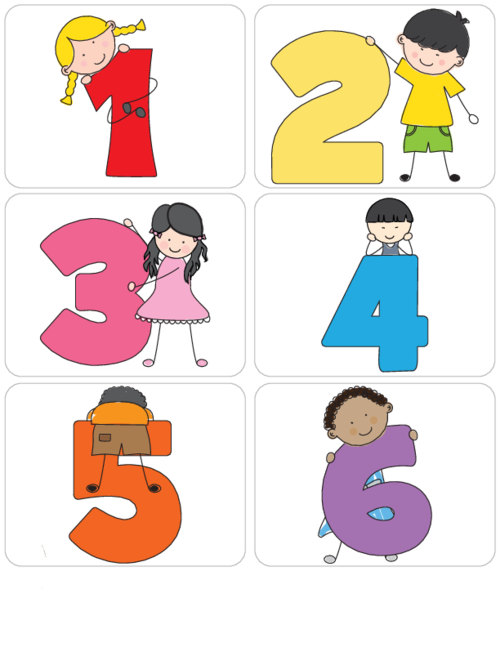
- Story-thematic game "Houses". The parent draws a certain number of houses on a piece of paper in advance and asks the child to bring as many toys so that all of them can be “populated” and not a single empty house is left.
- Mushroom game. The parent places “mushrooms” (pictures, cubes) in the room in advance, the child takes a basket with him and goes out to collect, finding the first one, he says “one”, the second - “two”, and so on.
There are a lot of games, so every day you should offer your child something new. You can also study at the computer, asking the baby to count the number of objects on the screen.
Using different forms of work
To make it easier for the baby to memorize the numbers, it is important to visualize each of them. There are several ways to do this.
- Print large pictures that depict the material being studied, and it is desirable that each number looks interesting, unusual (for example, a deuce in the form of a snake).
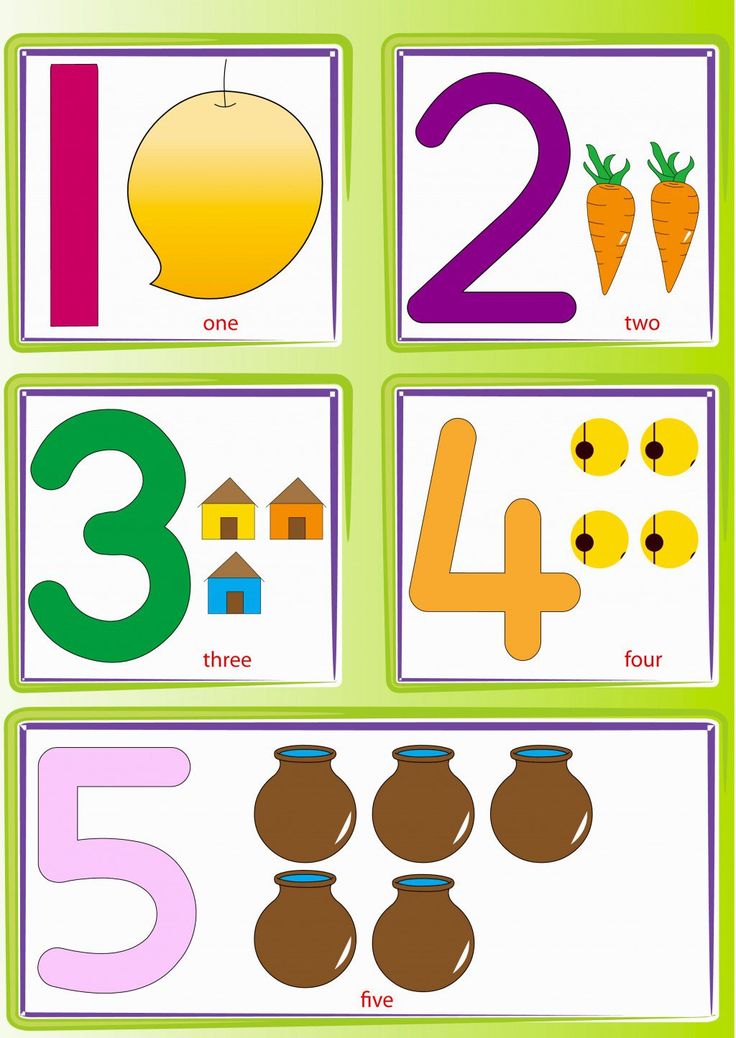 Invite the child to color the picture with bright pencils, felt-tip pens, paints.
Invite the child to color the picture with bright pencils, felt-tip pens, paints. - Another similar task is a coloring book, which shows the indicated number (for example, five kittens) and there is a five next to it. The child paints the picture itself and the number, gradually memorizing. Over time, the task can be complicated: there is only a certain number of objects in the picture (4 apples), the kid paints them and prepares for the parent how many of them, what number to enter.
- The child will complete this task with pleasure: he will look for familiar numbers everywhere - on the street in the numbers of houses, buses, cars, on billboards. Impatient parents will be annoyed by this desire, and wise mothers and fathers themselves will offer the baby a fun task - who will find more twos or ones during the walk. And, of course, an adult must definitely lose.
In order for a child to quickly comprehend the basics of counting, one should constantly say counting rhymes with numbers, for example: "One-two-three-four-five, we are going for a walk with you.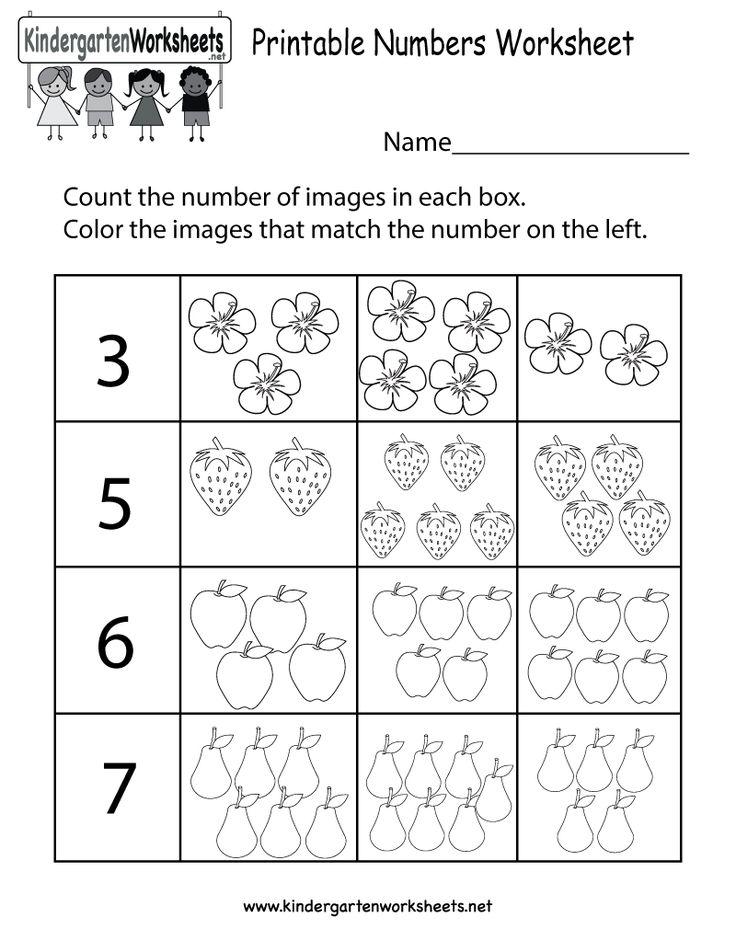 " Such a simple text can be spoken before each walk, after a few times the child will be able to repeat it himself. Board games will also be useful: by throwing a die and counting the required number of steps on the playing field, the child will quickly learn to count.
" Such a simple text can be spoken before each walk, after a few times the child will be able to repeat it himself. Board games will also be useful: by throwing a die and counting the required number of steps on the playing field, the child will quickly learn to count.
Learning numbers with children at 3-4 years old is a very real task, but you will have to show your imagination by offering the crumbs all new exercise options. Patience is also extremely important, because it will not be possible to carry out the plan the first time - perhaps some number will have to be given several classes. And this is normal, because each baby has its own level of development.
Olga Shumskaya
Chief editor of the Razvivashka Online project on early childhood development
About the expert
Olga is an active mother who is passionate about child development.